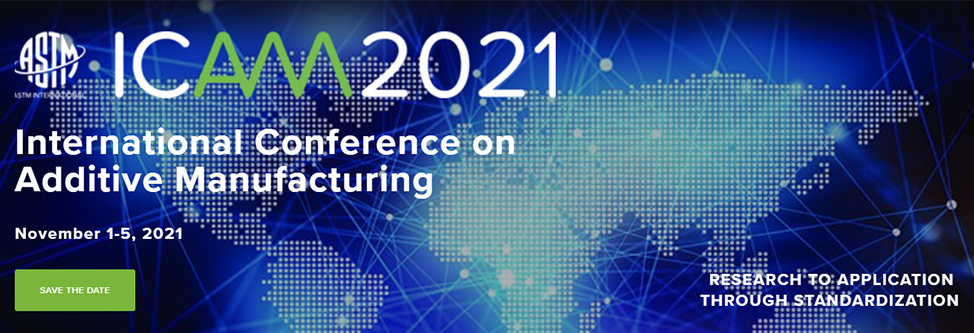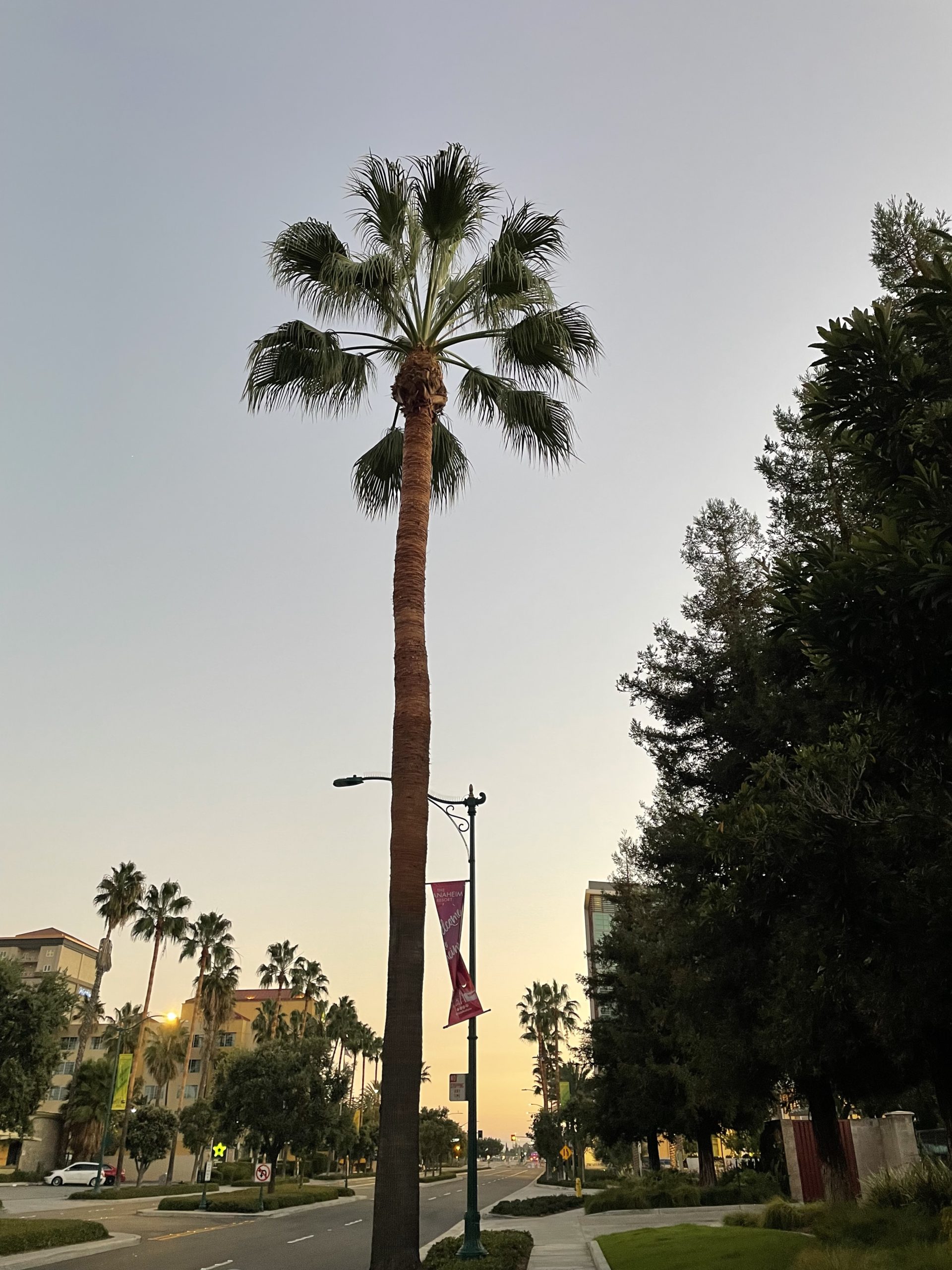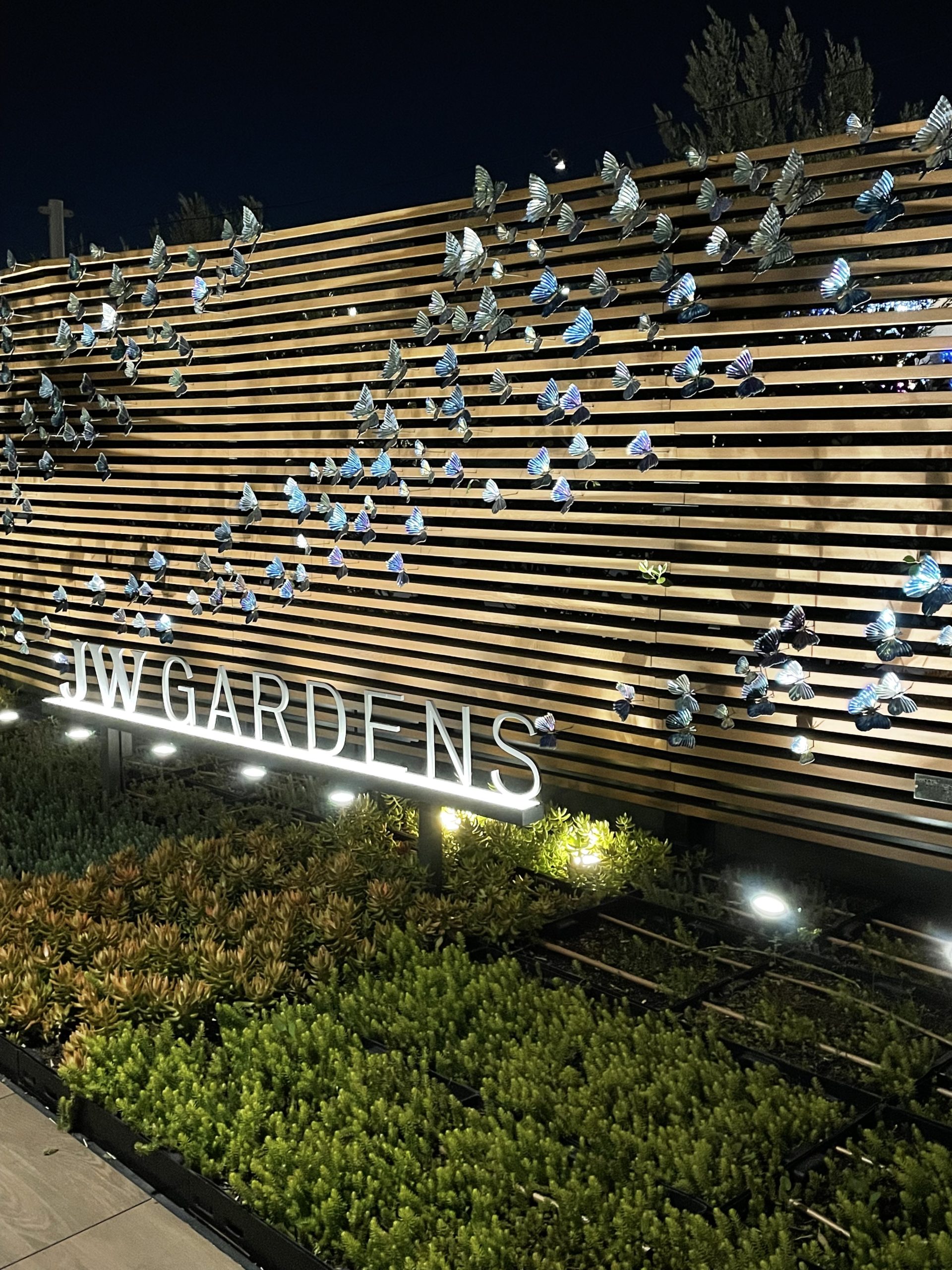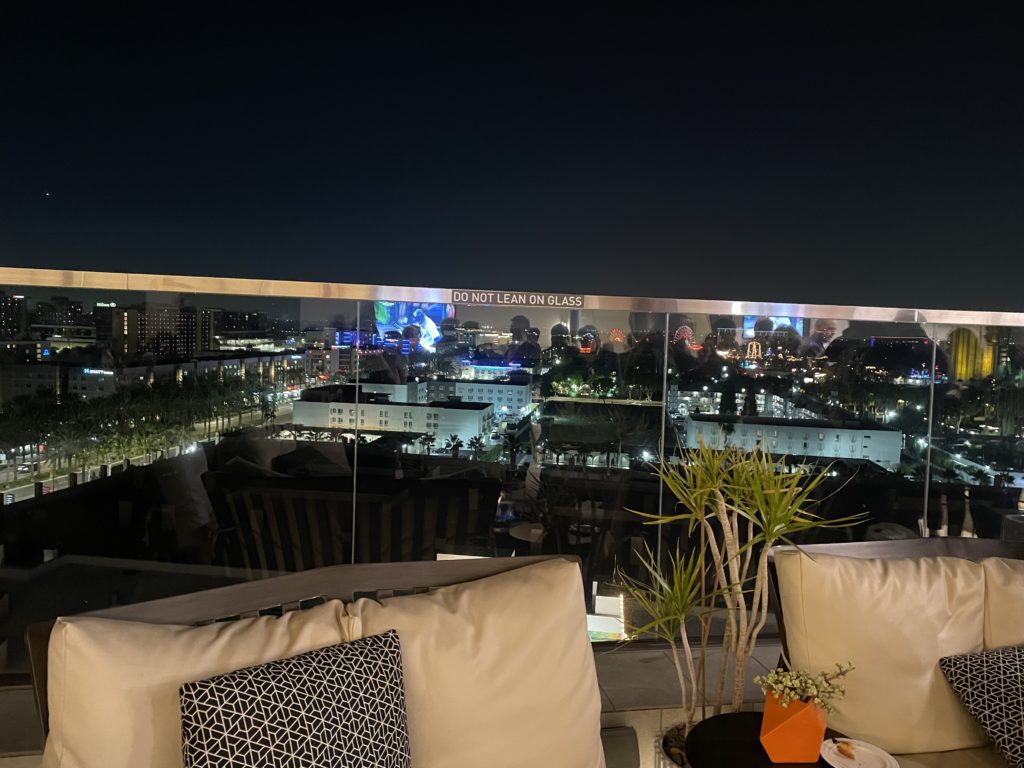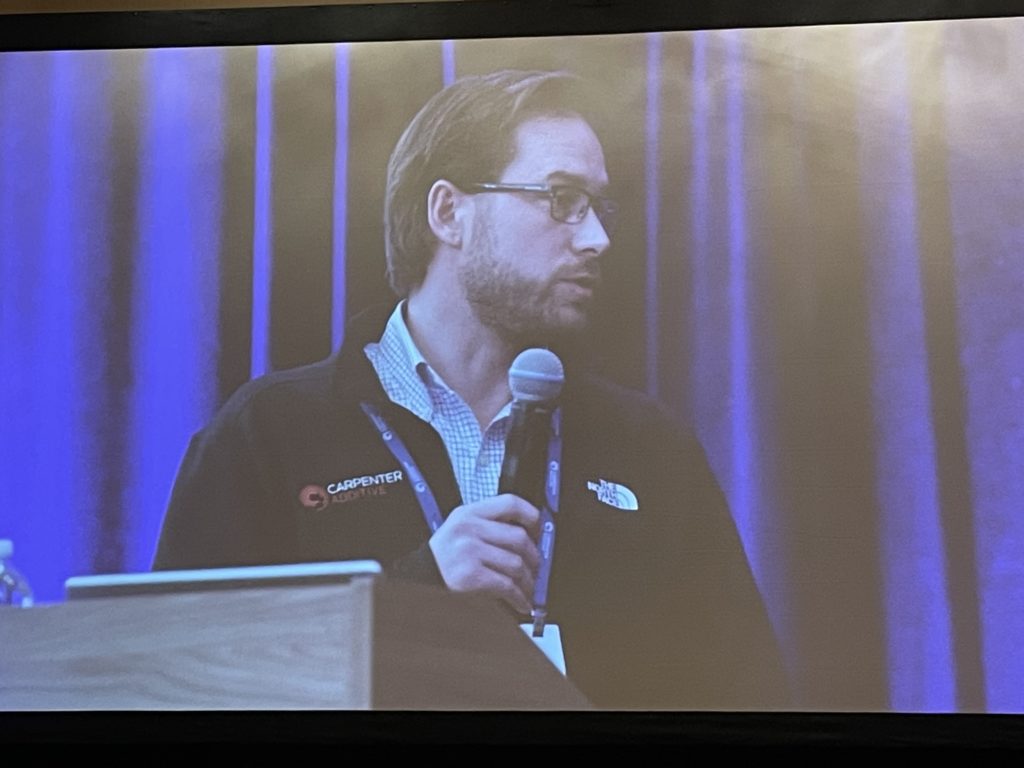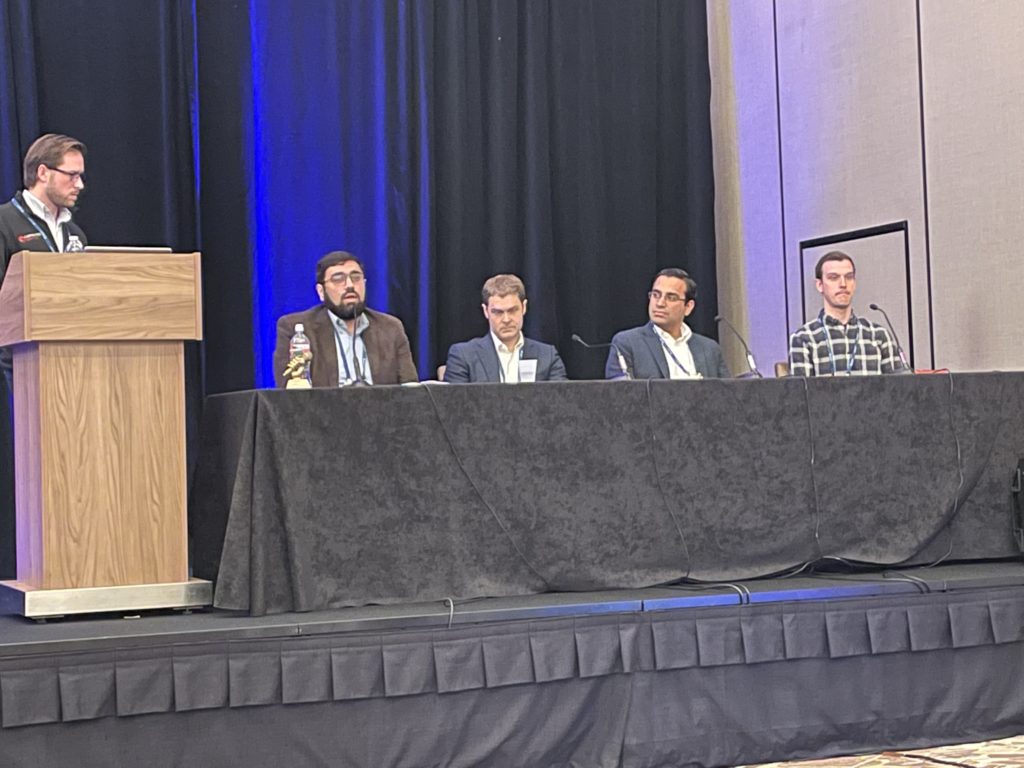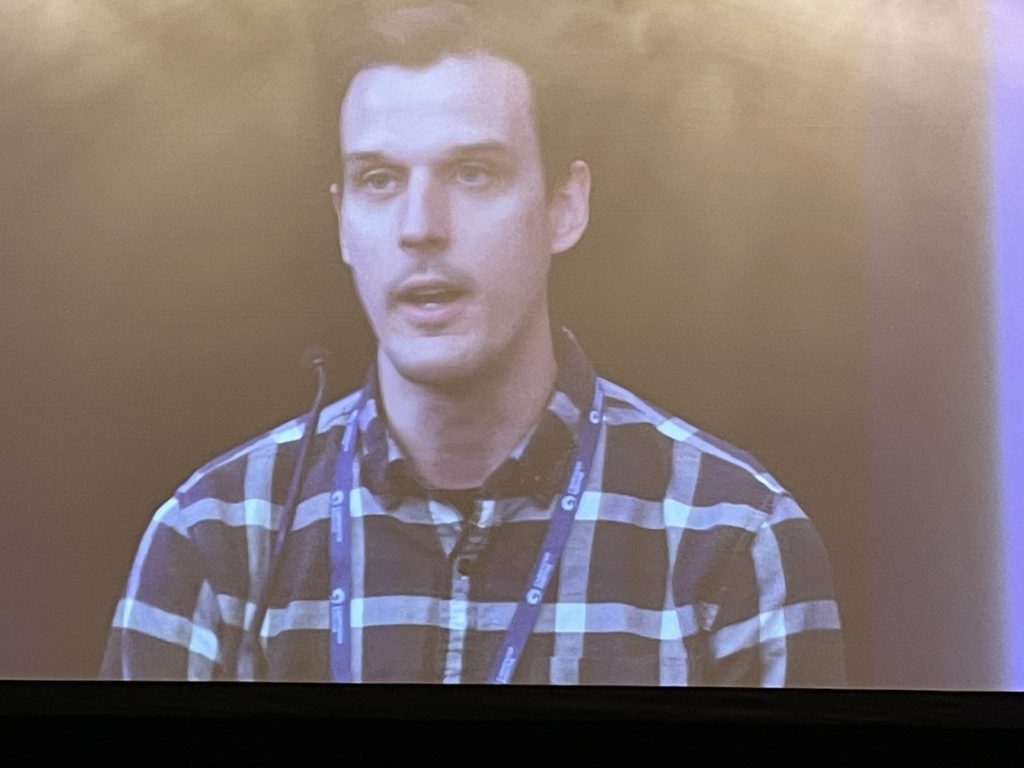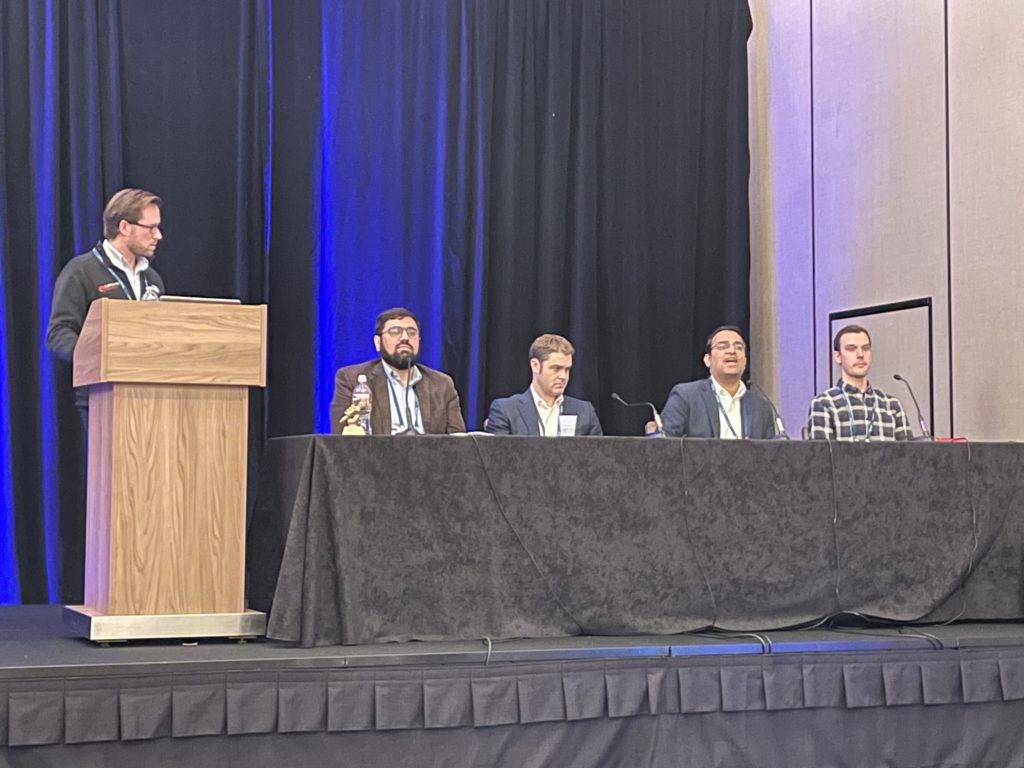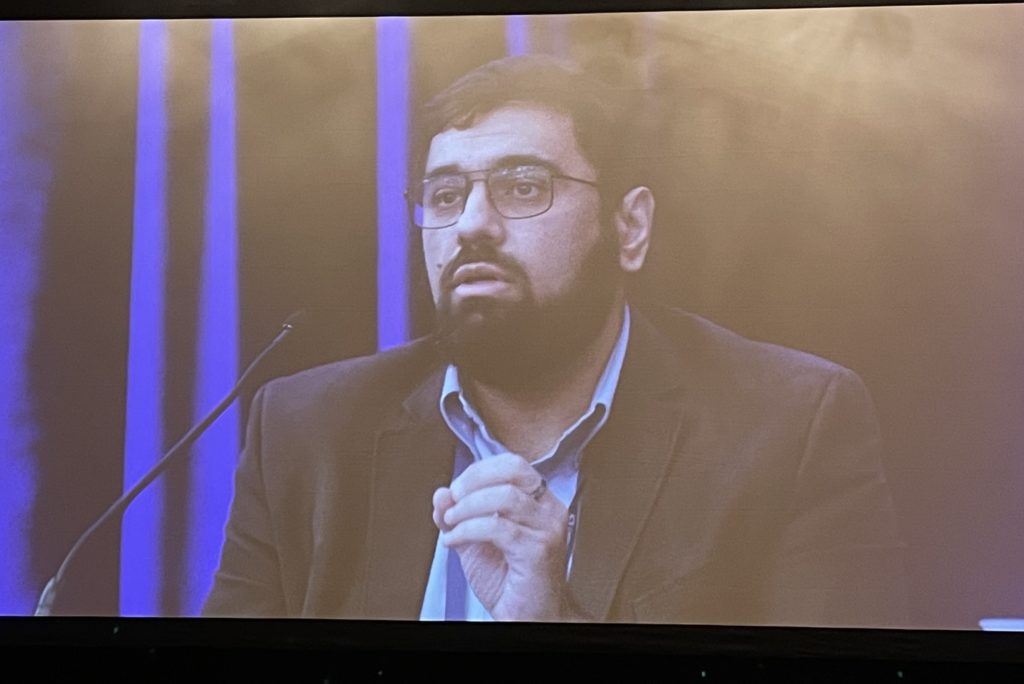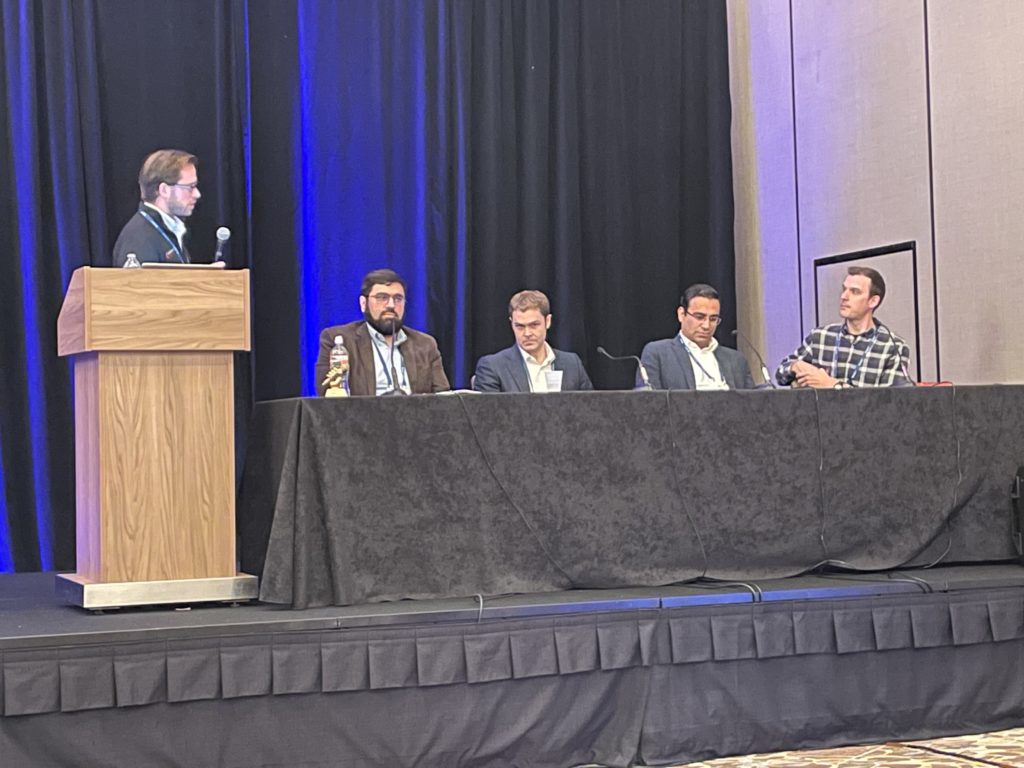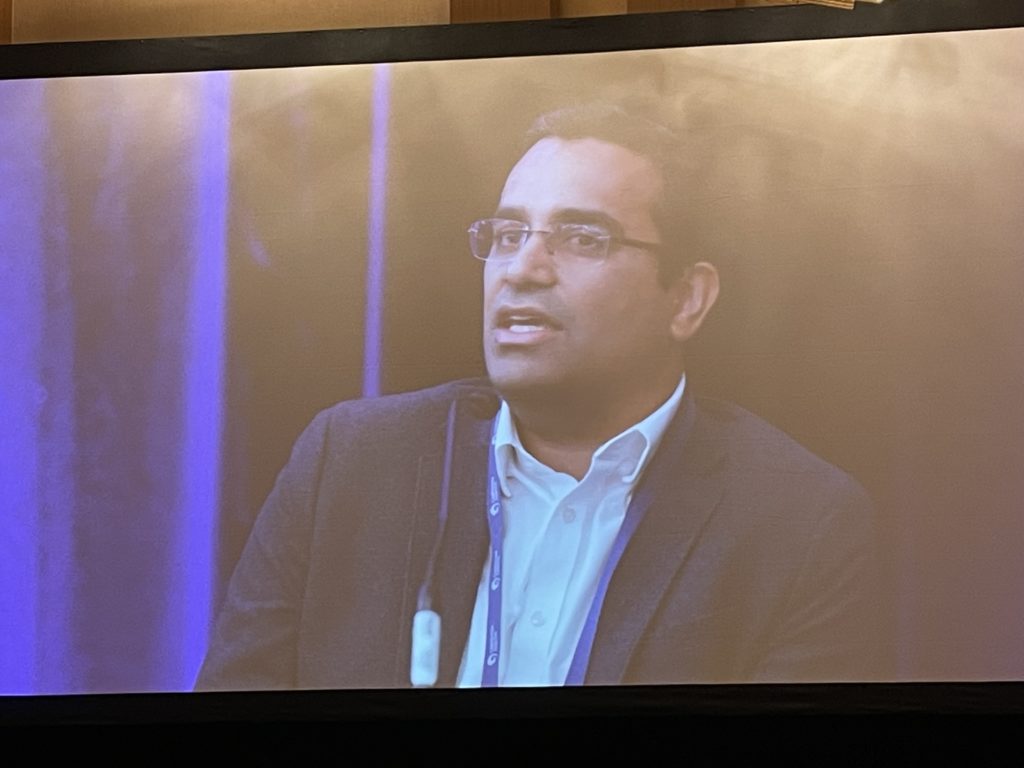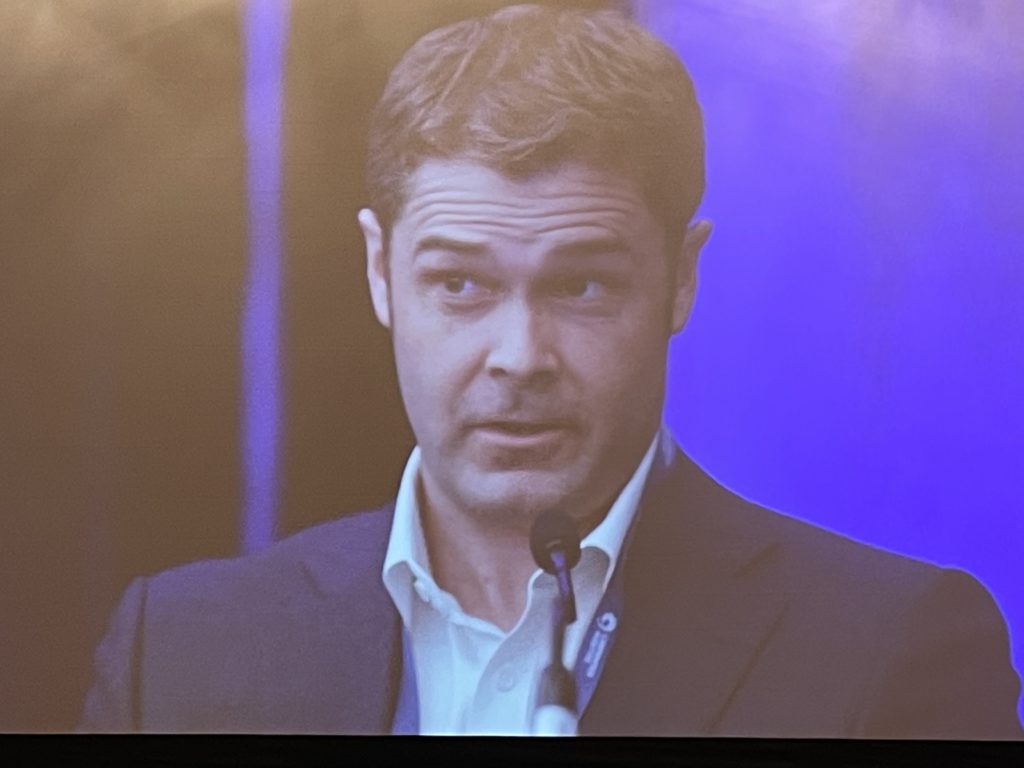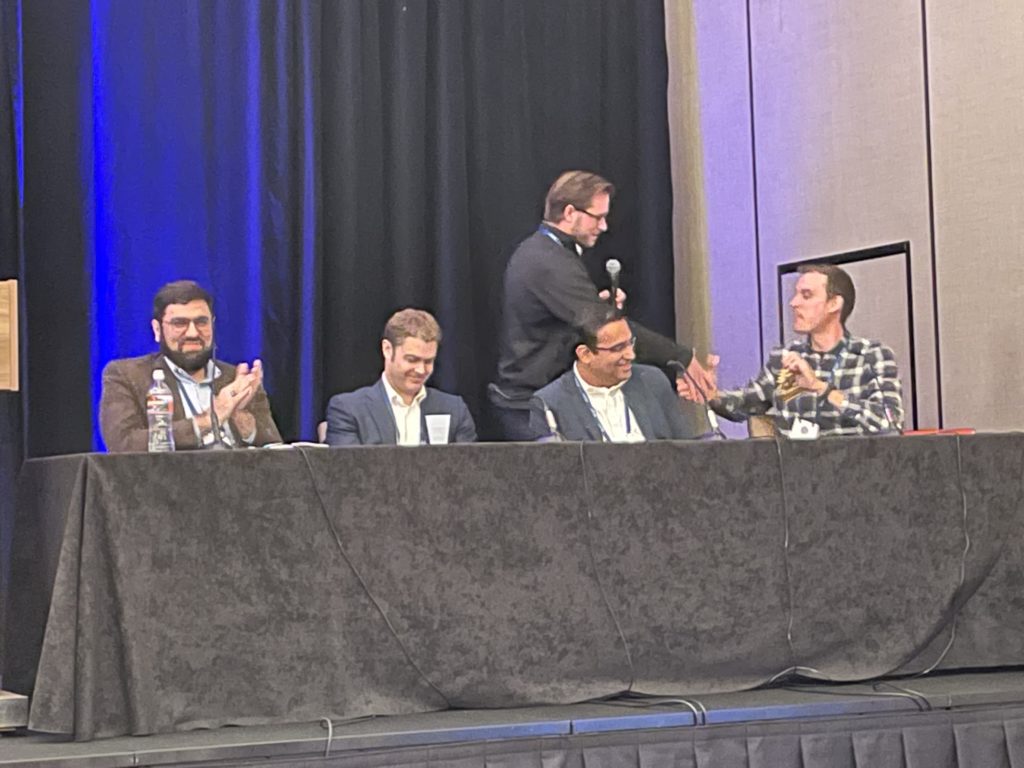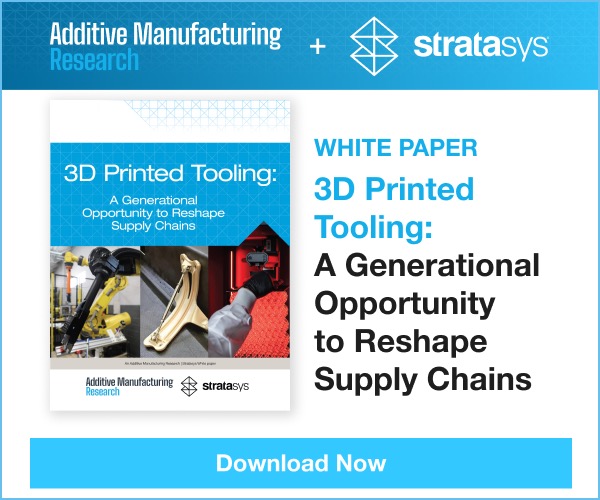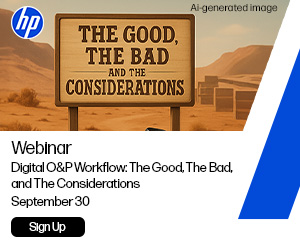Hosted by ASTM International’s Additive Manufacturing Center of Excellence (AMCOE), the 2021 International Conference on Additive Manufacturing (ICAM) was held in Anaheim, California last week. 3DPrint.com was a media sponsor for the event, and I was excited to be able to attend in-person, not only because it was about 20 degrees warmer there than at home in Ohio, but also due to the more than 580 presentations, 26 symposia, exhibits, and networking opportunities that took place at the event, which was a hybrid mix of live, streaming keynote presentations and panel discussions and on-demand symposia talks.
The topics at ICAM 2021 covered everything from 3D printed polymers, characterization of AM feedstock, mechanical testing of AM materials, and electronics 3D printing to applications in aviation, defense, medical, energy, construction, and a whole lot more. The event was held at the beautiful JW Marriott Anaheim Resort, mere blocks from Disneyland, featuring an awesome rooftop bar, which is where the Los Angeles chapter of Women in 3D Printing held a happy hour event on Tuesday night, and a rooftop garden, where ASTM’s happy hour was held Wednesday evening.
The first panel I attended was on Tuesday, moderated by Carpenter Additive‘s Vice President Ben Ferrar and focused on some of the biggest challenges for feedstock to enable AM to scale and, as Ferrar explained, “getting the technology to scale to the level we know it can reach.”
This panel was different from others I’ve attended because a competitive element was added to the mix—each panelist chose what they thought the biggest challenge was, and would argue their point the best they could during the panel. At the end, the audience would vote on what they thought the biggest challenge was, based on the panelists’ arguments, and the winner received a trophy.
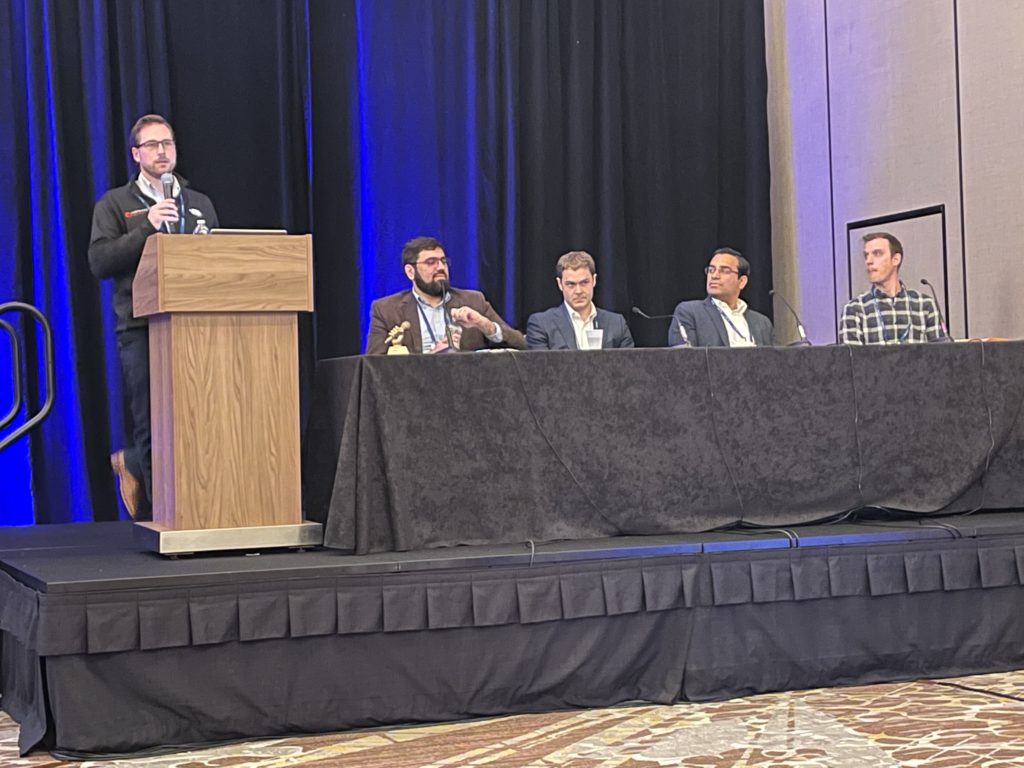
L-R: Ben Ferrar, Carpenter Additive; Behrang Poorganji, University of Toledo; Adam Hopkins, Uniformity Labs; Ankit Saharan, EOS North America; Kiley Versluys, SpaceX
Adam Hopkins, the CEO of Uniformity Labs, believes that the greatest challenge in AM feedstock today is material standards and properties data, “coupled with printers and parameters.” He explained that additive manufacturing “is in fact complicated,” and technologies like CNC machining “have achieved a level of reliability” that AM has not, but this only means that “the controls are not yet in place.”
“My argument is we need to improve our specifications, because the specification for powder is short, and we need more detail. What we need, in my opinion, are powders that are reliable, the right specs, right parameter, right mechanical properties, and it all has to be set down correctly in the environmental parameters.”
Kiley Versluys, Lead Engineer – Metal Additive Manufacturing Development at SpaceX, argued that powder cost is the biggest challenge for AM feedstock, because if the powder is expensive, “it makes everything else more difficult.” But he also said that the total cost is another part of this major challenge, because “once we start scaling this thing, additive manufacturing will really be competing with technologies like casting, “and not just to make it cheaper, but to make it the most usable.”
“If your powder already starts at $100 a kilogram, you’ve already blown a lot of money without even purchasing the printer. As you scale, if 5% of your powder is scrapped, it’s an enormous operational cost if it’s $100 a kilogram. It’s really important to target what the cost is in your industry.”
Focusing on material qualifications and measurement techniques for his stance, Research Professor and Director of Advanced Manufacturing at the University of Toledo Behrang Poorganji said the challenge here is “identifying what is critical to the quality of powder.” There’s a lot of factors to contend with in powder, including chemistry, size distribution, rheology features, charges, spreadability, and flow, and Poorganji asked how we solve this “matrix of variables.”
“How do we standardize the measuring techniques and find the relationship between this characteristics and the final properties? An organization like ASTM, in collaboration with industry, academia, and government, can help better establish what the requirements are.”
Finally, Ankit Saharan, Sr. Manager for Metals Technology at EOS North America, argued that the biggest feedstock challenge for AM is new materials, because “there’s a whole host of other industries we haven’t touched on” in terms of scale, like consumer technology and renewable and nuclear energy, or at least not as much as aerospace and medical. People in these AM-underserved industries have asked about specific materials being available for printers, “but the alloys are just not designed for the process.”
“So unless we really start to focus on what can we do to create new materials to make these applications possible, we’ll be limited to the industries we’re working in right now.”
After each panelist had the chance to state his case, Ferrar asked Hopkins who he feels should be responsible in the future for defining the parameters for materials and their properties, who answered that currently, it’s partially in the hands of the users, “which I’m arguing is not a great idea.” He said there needs to be collaboration between the OEMs and powder manufacturers to properly define these parameters. Saharan said he agreed with Hopkins in principle, “but at present, we’re talking about end-use parts.”
“From this perspective, the liability lies completely on the end user, not on the printer OEM,” Saharan continued, explaining that there should be just one “owner” on the end user side who can effectively answer questions for regulators. “I think the technology users understand this better than any of us.”
Poorganji seemed to agree with Hopkins, asking why the responsibility for material properties and definition was on the end user, and not on the people actually making the feedstock. Saharan had an answer to this as well, stating that “at the end of the day you’re selling material properties” and that goal definitions for this should come from those actually using the material.
The back and forth continued, with Poorganji asking how material properties after a build and post-processing relate to feedstock properties, and Saharan saying that yes, we do need to understand this from a powder feedstock standpoint.
“My only point,” he explained, “is that when it comes to specification, what’s good and bad, that’s something we end users decide. Sometimes static is important, or creep, or chemistry.”
Poorganji said we need to understand what’s important to quality in feedstock, and Versluys weighed in, saying that the performance of the end product is what needs to be considered here. He noted that there are plenty of times when users have good powder but bad parameters and end up with a bad product, and also bad powder with good parameters, resulting in a decent product. If the powder cost is too high, there’s less room to tweak and innovate.
“It’s for the end user to decide if they want to save on powder costs,” he stated. “The lower the cost, the lower the barrier to entry is to try new things.”
Hopkins asked Versluys that, if the liability has to eventually rest with the end user, if there are repeatable, reliable specifications available, would it help in reducing the barrier to adoption?
“You have to choose, when you start laying the groundwork, where you want to end up. We’re kind of stuck up at this high cost, because that’s what we’re trying to make a standard around, so we need to find the safe ledges to stand on but keep pressing forward,” he answered.
Ferrar steered the conversation toward cost—what Versluys argued was the biggest challenge for feedstocks enabling AM to scale—and asked what the percentage of material cost needed to be to really scale the technology. Versluys said it’s about a quarter to thirty percent of the total cost at the moment, and that “the larger contribution to that is actually machine capital.”
“As we have new, larger, higher-productivity platform coming out, we’re going to shrink that portion of the pie chart pretty substantially,” he said. “So now powder becomes the single largest contribution to the pie chart. For us, $100 a kg is what we see as cost-competitive with other manufacturing techniques. But then you’ve 100% filled your pie chart with powder costs.”
Poorganji recalled the previous “golden statement” by Versluys, in that you can have bad powder but a good machine, or vice versa, but that “the definition of good and bad can affect cost.” He asked Versluys how to define bad powder or feedstock, who answered that it was application-specific, giving the example of a large flange that holds together two engine parts.
“The mechanical properties for fatigue you worry about less, so you may have different criteria,” he explained. “You use different process parameters if you need more fatigue life, or a complex, thinner wall. It’s all driven by the part, and the powder you’re using has to be able to adhere to that.”
Saharan said what we need to do is look at why the powder is so expensive, and that in some cases, “we need to invest in better, more efficient atomization technologies.”
“You have to fundamentally ask, do we really need spherical powder? Can we work with non-spherical or irregular powder, which is a little cheaper?”
Ferrar asked the group what’s stopping users from actually doing this, wondering aloud if there was a higher degree of confidence and data in spherical powders. Saharan made the excellent, but slightly depressing point, that it “really depends on who wins the argument, the engineering team or the purchasing team.” No surprise here, all the panelists agreed that the engineers should be the ones making that decision.
“An engineer can decide, if he’s given a proper, reliable spec, he can decide what’s good enough,” Hopkins said. “But he’s got to know that’s what he’s going to get. It can’t be ‘it’s good enough’ 98% of the time, or even 99% of the time. AM is a very high-value industry, it’s never going to be a situation where a forecasting quality is sufficient, though there are some rare exceptions, like powder bed fusion. So the engineer has to make the decision, but it still has to be less expensive too.”
Sticking with the cost question, Hopkins said that while cost is definitely an issue, he believes it’s one that will “naturally resolve itself provided that AM becomes more widespread,” and asked Versluys his opinion on this.
“I think we may be stuck with gas atomization, and maybe there is another technique, whether that’s water atomization or something to make powder or refine poorly made powder,” Versluys answered. “I think we really need to start searching more globally for another solution, and I think it’s probably going to be alloy-specific.”
Moving to material characterization, Ferrar asked Poorganji what critical tests he would need to do on incoming material if he were a parts producer, like a service bureau, and also what equipment he would need to perform these tests.
He answered with a hypothetical story: “So I start putting together a spec, and then communicating it to the folks that are making powder, but then thought, what spec should I put together, as my own spec that is not replicating anyone else’s. It’s not that I don’t trust Ben’s spec, but I want my own spec. So I call Ankit and ask, what would be the right spec, and he says, we have an EOS spec, do you want to use that? Well, potentially, because I’m going to use your machine, but I want my own spec. So I go and read Adam’s PhD thesis, and then I become more and more baffled, it’s so complex. What should go into this powder spec? So I finally make up my own, and give it to you, Ben, and you say it can be done, but it will be 50% more expensive. My spec is a good spec, but it’s not working for that industry.”
Poorganji noted a hesitancy to try new things, be it machines, processes, or materials, and that we need to establish a baseline to understand more of the science and engineering, as opposed to “the art,” where you just pour the powder into your hand or spread it on a table with a knife, look at it, see that it’s not perfectly matching, and declare that it won’t work. So Ferrar again asked what critical test methods are needed to characterize materials, and Poorganji said that there are some testing techniques available today, but no established guideline for “if you get this rating, the material is good, and if you get this one, it’s not.”
“Standards are so wide these days, how do you measure what is good?” he asked. “Organizations like ASTM can really help facilitate this, and go after standardization.”
Saharan said that when it comes to characterization, you can take any spec, from ASTM or ISO or whatever, but if the material doesn’t work in the machine, that paper won’t help.
“Anyone who wants to test the powder, the machine itself is the ultimate test, put the powder in and see how it works, and how it performs inside the machine.”
Ferrar took the opportunity to ask Saharan why, if there are so many problems with existing materials, does he think new materials will help. He answered that he believes new materials “will help us understand how this whole thing works.”
“Basic research is kind of taken as a given, even if it was done 10 to 15 years ago,” he said. “That’s why new materials are so necessary, you’re going to go back to the basics and find what’s important. Maybe we can find a way to better control humidity or oxidation, which is more important for copper. I think that’s going to start seeping into other materials. It will bring us back to the science, trying to understand what’s really important.”
Versluys came back to his stance again and said that if we’re talking about scaling, there’s “an inherent cost” in standardizing with five different alloys, and that finding an alloy with the broadest reach, as opposed to coming up with new ones, is what will ultimately help the industry scale. Saharan countered that people in standardization will have a hard time keeping up with the hardware.
“I think that’s right,” Hopkins said. “Borrowing from our friends, and sometimes greatest competition, in subtractive manufacturing, aluminum 6061 is used predominately in machining. It’s a great material, inexpensive, it’s easy to machine, and yet it gives you terrific properties. With respect to additive, if we go to new materials that maybe stretch the bounds of what’s possible in terms of properties, but they become less reliable or less repeatable, you can always say ‘maybe that material’s out there, we don’t really need to do that work,’ and you discover this magic material that’s just perfect for additive, and it’s easy to qualify, and it’s more repeatable. But it’s actually going the other way, in new materials. We’re actually looking at materials that are harder to print reliably, and fundamentally, that’s a greater problem, at least in my opinion, than the problem that the new material may solve.”
Saharan agreed that this was a fair point, but noted that we can’t stop materials research just because we already have some that work.
“None of the alloys were given to us,” he said. “Everything has to start somewhere. Maybe aluminum X is better than aluminum 6061.”
After taking some questions from the audience, Ferrar called for a vote on the biggest challenge for feedstock to enable 3D printing to scale: materials properties and parameters (Hopkins), cost (Versluys), measurement techniques (Poorganji), or new materials (Saharan). The winner of the argument, and the trophy, was Versluys, stating that powder cost was the greatest challenge.
Stay tuned for more of my coverage from ICAM 2021!
Subscribe to Our Email Newsletter
Stay up-to-date on all the latest news from the 3D printing industry and receive information and offers from third party vendors.
Print Services
Upload your 3D Models and get them printed quickly and efficiently.
You May Also Like
3DPOD 272: Kevin Kassekert, VulcanForms CEO
Kevin Kassekert has deep experience building factories for Tesla and has worked in the semiconductor industry. He now helms VulcanForms and is looking to scale their high-yield Laser Powder Bed...
3D Printing News Briefs, September 17, 2025: IDEX Printer, NiTi Scaffolds, Cooking Oil, & More
In today’s 3D Printing News Briefs, Raise3D announced the launch of a new printer at FABTECH 2025, and EOS and AM Solutions share about their integrated post-processing ecosystem, first introduced...
3D Printing News Briefs, September 13, 2025: Automated Post-Processing, Stratospheric Probe, & More
In this weekend’s 3D Printing News Briefs, we’re first sharing about a case study from PostProcess Technologies about optimizing post-print workflows at J.W. Speaker. AM Solutions’s post-processing technology was used...
Getting a Foothold in Additive: White Paper from AM Research and Stratasys Makes the Case for 3D Printed Tooling
Despite all the assumptions that Western reshoring efforts would be bolstered by the tariff-centric trade war policies initiated by the second Trump administration, it’s still far too early to guess...


